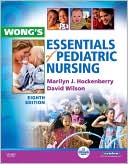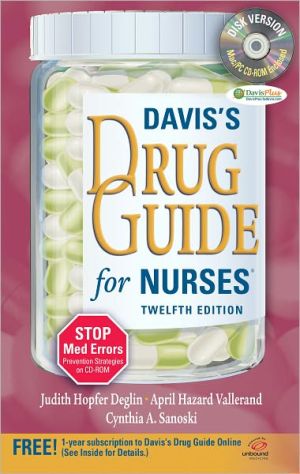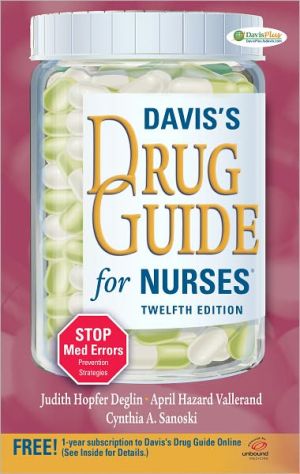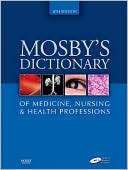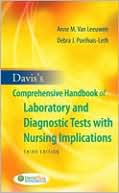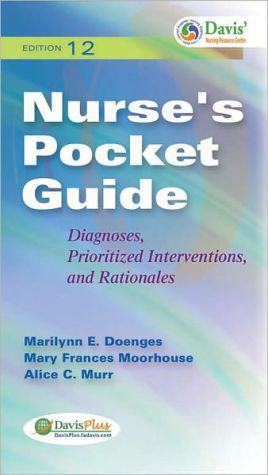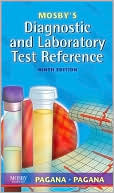Wong's Essentials of Pediatric Nursing
Search in google:
The #1 pediatric nursing textbook on the market, this book is known for its accuracy, current research, and highly readable writing style. It provides a foundation in child development and health promotion, and covers specific health problems — organized by age groups and body systems, so you can individualize care at the appropriate level for each child. A streamlined approach, superior illustrations, and a full-color design make it easy to find and understand key nursing information.• A family focus emphasizes the role and influence of the family in health and illness. • A “wellness” emphasis includes age-specific information on health promotion and injury prevention relevant to specific age groups, and discusses play, safety, language, self-esteem, nutrition, dental health, sleep, exercise, and sexuality. • Detailed presentations of pathophysiology in disorder sections provide a clear understanding of the impact of disease on normal physiologic functions. • Critical thinking exercises help you apply your knowledge and clinical judgments to specific situations. • Nursing Care Guidelines boxes provide clear, step-by-step instructions for performing specific skills or procedures. • Evidence-Based Practice boxes help you apply research and critical thought processes to support and guide the outcomes of nursing care. • Atraumatic Care boxes provide guidance for administering nursing care with minimal pain or stress to the child, family, and nurse. • Ethical case studies reflect complex patient care situations and illustrate proper consideration in care delivery. • Community Focus boxes emphasize community issues and provide additional resources on caring for children outside the clinical setting. • Emergency Treatment boxes provide quick reference in critical situations. • Nursing Alerts provide critical information and Nursing Tips provide helpful hints. • Cultural Awareness boxes highlight ways in which variations in beliefs and practices affect child care. • Chapter Outlines and Learning Objectives guide your approach to learning. • Key Points help you review and learn important concepts. • Up-to-date references highlight research and focus your review of important content. • Spanish-English translations in the appendix feature words and phrases commonly used in nurse-parent interactions. • Related Topics and Additional Resources in each chapter refer you to related information inside the book and in ancillary materials. • Free companion CD features NCLEX exam-style review questions, animations, critical thinking questions, case studies, modifiable nursing care plans, pediatric assessment video clips, illustrated pediatric skills, anatomy reviews, and more.• New Pain Assessment and Management in Children chapter consolidates coverage of this subject for easy reference. • Nursing care plans provide a model for planning patient care, including nursing diagnoses, patient/family goals, nursing interventions/rationales, expected outcomes, and newly included NIC and NOC classifications. • Family-Centered Care boxes help you prepare families to cope with their child’s care in special situations, providing information on patient teaching, home care, and incorporating the family in the child’s care. • Nursing process boxes provide streamlined, accessible information on major diseases and conditions.
Unit One—Children, Their Families and the Nurse1. Perspectives of Pediatric Nursing2. Community-Based Nursing Care of the Child and Family3. Family Influences on Child Health Promotion4. Social, Cultural, and Religious Influences on Child Health Promotion5. Developmental Influences on Child Health PromotionUnit Two—Assessment of the Child and Family6. Communication and Physical and Developmental Assessment of the Child7. Pain Assessment and Management in Children NEW! Unit Three—The Newborn8. Health Promotion of the Newborn and Family9. Health Problems of NewbornsUnit Four—Infancy10. Health Promotion of the Infant and Family11. Health Problems of InfantsUnit Five—Early Childhood12. Health Promotion of the Toddler and Family13. Health Promotion of the Preschooler and Family14. Health Problems of Toddlers and PreschoolersUnit Six—Middle Childhood and Adolescence15. Health Promotion of the School-Age Child and Family16. Health Promotion of the Adolescent and Family17. Health Problems of School-Age Children and AdolescentsUnit Seven—The Child and Family with Special Needs18. Chronic Illness, Disability, or End-of-Life Care for the Child and Family19. Impact of Cognitive or Sensory Impairment on the Child and Family20. Family-Centered Home CareUnit Eight—Impact of Hospitalization on the Child and Family21. Family-Centered Care of the Child During Illness and Hospitalization22. Pediatric Variations of Nursing InterventionsUnit Nine—The Child with Problems Related to the Transfer of Oxygen and Nutrients23. The Child with Respiratory Dysfunction24. The Child with Gastrointestinal DysfunctionUnit Ten—The Child with Problems Related to the Production and Circulation of Blood25. The Child with Cardiovascular Dysfunction26. The Child with Hematologic or Immunologic DysfunctionUnit Eleven—The Child With a Disturbance of Regulatory Mechanisms27. The Child with Genitourinary Dysfunction28. The Child with Cerebral Dysfunction29. The Child with Endocrine Dysfunction30. The Child with Integumentary DysfunctionUnit Twelve—The Child with a Problem that Interferes with Physical Mobility31. The Child with Musculoskeletal or Articular Dysfunction32. The Child with Neuromuscular or Muscular DysfunctionAppendixesA. Family AssessmentB. Patterns of InheritanceC. Developmental/Sensory AssessmentD. Growth MeasurementsE. Common Laboratory TestsF. Dietary Reference Intakes: Recommended Dietary Allowances (RDA) and Adequate Intake (AI) G. NANDA-Approved Nursing DiagnosesH. Translations of Wong-Baker FACES Pain Rating ScaleI. Spanish-English Translations
